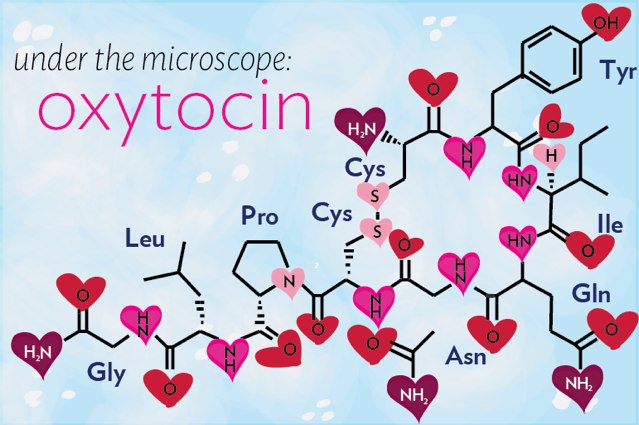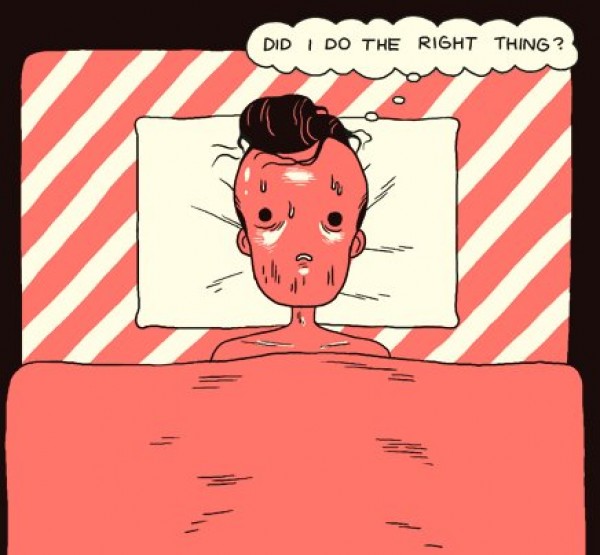The Playgirl aspect in every woman’s psyche — in every culture — seeks physical pleasure through all her five senses. Nature supports her mating well, especially through the sense of smell, her pheromones. Dr. Theresa L. Crenshaw, a pioneer in sexual medicine, in her 1996 book, The Alchemy of Love and Lust, writes about the “bonding” influence of the peptide oxytocin.
Oxytocin is secreted from the pituitary gland’s posterior lobe from which it goes to receptor sites in the brain and throughout the reproductive tract, especially where estrogen resides. Dr. Crenshaw’s work is based on a Niles Newton 1978 article, “The Role of the Oxytocin Reflexes in Three Interpersonal Reproductive Acts: Coitus, Birth and Breast Feeding.” Oxytocin increases sensitivity to touch, especially sexual touching, particularly at the time of orgasm. Alcohol lowers oxytocin.
How does this oxytocin effect impact a woman’s relationship to men? When she first meets a potential mate, she is either:
Disinterested Open to investigate, or Highly attracted
If she is disinterested, it may be because of an intellectual decision that the man is not eligible due to unacceptable looks, social skills, or poor financial prospects. These factors can all be overridden by continued dating exposure if the pheromones (chemistry) are basically positive. Her brain may disqualify him, while her body says “yes.” I advise women to date each decent man at lease three times before discarding him as a suitor. If he passes this “brain barrier” and she determines he is eligible to investigate — and the chemistry is reciprocal — then normal dating occurs.
The “highly attracted” category is the most addictive-prone area and the one that I wish to address. When a woman is in the presence of an oxytocin-stimulating man, she may override her intellectual judgment about their “compatibility,” especially when she attempts to diminish oxytocin’s impact with alcohol.
Where formerly she might be sexually conservative, requiring a serious commitment, she now finds herself deeply involved sexually before negotiating boundaries, such as his (or her) current marital status, criminal background, and financial accountability.
The problem with oxytocin-based addictive bonding to an inappropriate man is that the intellect is relegated to a secondary status in choice and judgment. The good counsel of parents, friends, religious leaders and psychotherapists is of no benefit. Addiction to oxytocin as a pleasure takes over.
The Amazon
The Women’s Liberation Movement has freed the Amazon to such a degree that many women put its aspects of money, power, and prestige before the other three archetypes. Many young pre-menopausal women are embarrassed to admit that they want to marry and have children ahead of career-building.
The decision about being a Woman with a Career and not a Career Woman is the dilemma of our era. Putting career performance ahead of processing marriage and babies, while a woman is young, produces distress in the body and raises cortisol levels in the system. To be fertile, a woman’s brain must absorb the neurotransmitter serotonin, which is a natural tranquilizer.
Long-term, career-driven distress causes an inhibition of serotonin release. This inhibition directly impacts the hormonal balance necessary for impregnation. The current usage of SSRIs is a medical approach to alleviate the serotonin deprivation due to distress. Essentially, young women are not designed to live like testosterone or progesterone-based men and postmenopausal women.
Further repercussions of young career women with serotonin deprivation are carbohydrate craving and drinking to soothe the anxious nervous system by raising the brain’s glucose levels. Toleration and craving indicate that there is an addictive process going on in a woman’s body — whether genetically based or stress-related.
Once a woman has committed to a Career Woman/Amazon lifestyle of performance and competition for money, power and prestige, she often must pay sexually and martially. This woman is highly susceptible to a “bad man.” Men who feed off distressed career women, financially and/or sexually, are aided and abetted when women are anxious. This anxiety can be due to being over-worked, over-stressed, overly medicated with drugs or disinhibited with alcohol, or having low self-esteem from the shame and guilt of eating disorders.
A man with a good “line” and the right chemistry can easily “bond” such an Amazon woman. T.G.I.F. can occur at the end of everyday, calling for kick-back pleasure, especially sex. He often becomes the Amazon’s dependent “toy-boy” or her dominating abuser — neither a good husband or father for the children she wants “some day soon.”
Everyday I see women, whose clocks are pounding, who beg for help to abstain from “him” — the “bad man.”. They want a “good man,” but view him to be “boring” or a “sell out.” Quiet goodness and stability don’t “feel” like passion, which becomes the mainstay of women with exciting, painful, passionate bad men.
Affection, comfort, and being pleasured by a loving, generous, protective, cherishing man does not seem “right” to a woman who has sexually bonded to a man who uses or abuses her. Struggling and pain are part and parcel of her career, as well as her sex life.
Adulation of the Amazon archetype has cost many young women motherhood and marriage in exchange for careers that would be better served after menopause and chemistry changes. Getting an education in preparation for a delayed career and getting married and having children sooner rather than later, seems more balanced and less susceptible to “bad men” desperate choices. Our life span has extended into the 80s.
I advise women to carefully decide their sequence of life events. Are you a “Career Woman” or a “Woman with a Career on the side or later in life”? Each has value and each costs with motherhood and marriage. Career Women will make money whether married or not, but may not enjoy motherhood. Women with careers delayed or on the side may not make as much money, power or prestige as their Amazon sisters, but they may enjoy their marriages and motherhood more. My offices are full of unhappy Amazons, not happy moms.



